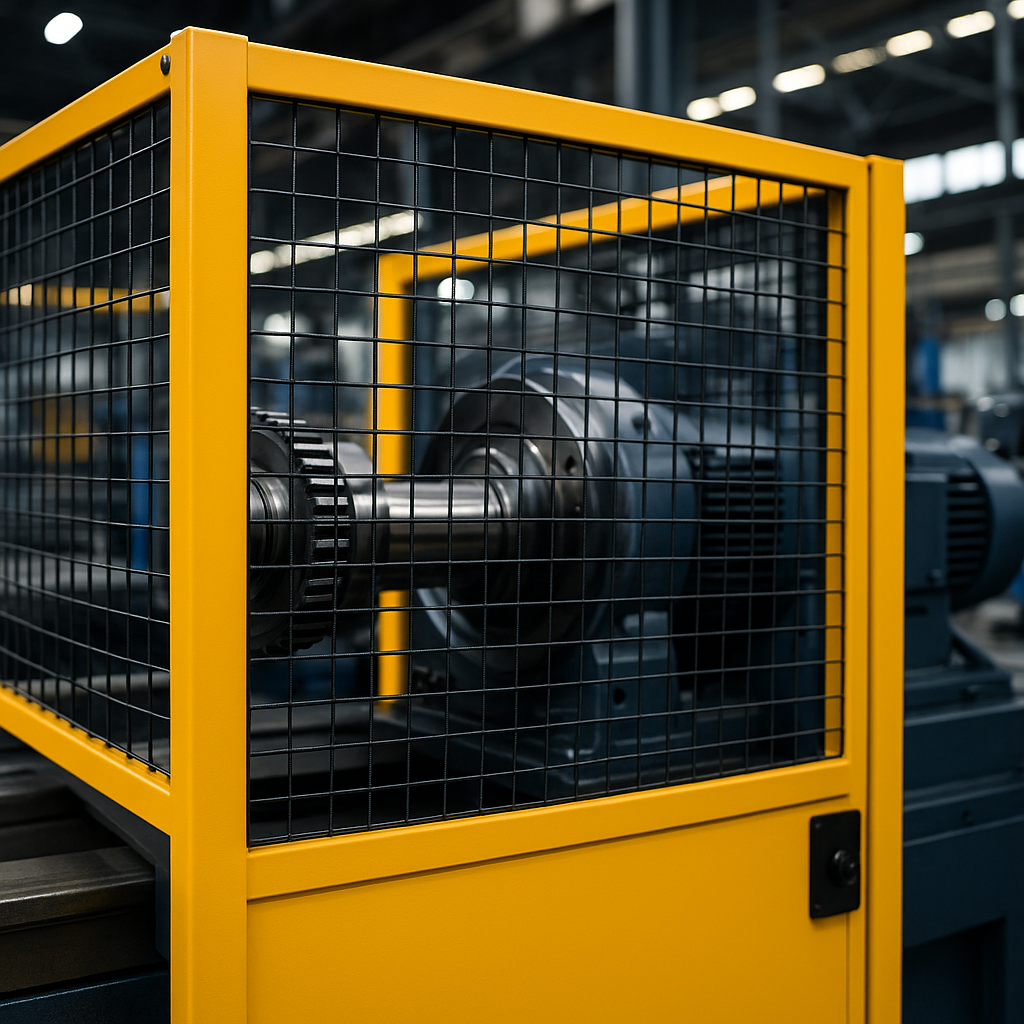Keep Your Team Safe with Proper Machine Guarding

Effective machine guarding is essential for protecting workers and ensuring compliance with New Zealand’s Health and Safety at Work Act 2015. Here’s what you need to know:
1. Machine guarding requirements under HSWA 2015
PCBUs must eliminate or minimise risks from powered machinery “so far as is reasonably practicable.” Conduct hazard identification, perform a formal risk assessment, and select appropriate guards before putting machinery into service. Refer to WorkSafe’s official guide: Ergonomics of machine guarding guide.
2. Applicable AS/NZS standards
New Zealand follows the joint AS/NZS 4024 series for guard design, construction, and installation. Ensure your guards meet all relevant clauses outlined in the AS/NZS 4024 standard series: Safe Use of Machinery.
3. Calculating safe separation distances
Ergonomic tables define minimum approach distances based on guard opening dimensions—preventing hands, fingers, or tools from reaching hazardous zones. See the separation tables in WorkSafe’s guide: Ergonomics of machine guarding guide.
4. Types of recognised guards
- Fixed guards: Permanently attached, removable only with tools.
- Interlocked guards: Automatically shut down the machine if opened.
- Adjustable guards: Manually adjusted to suit different workpiece sizes.
- Presence‑sensing devices: Such as light curtains or pressure mats.
5. Inspection & maintenance frequency
Perform daily pre‑start checks, monthly functional inspections, and annual comprehensive maintenance—or more often if your risk assessment dictates. For guidelines: Safe Use of Machinery.
6. Permitted guard‑removal procedures
Guards may only be removed under a documented lock‑out/tag‑out (LOTO) procedure, ensuring full energy isolation before maintenance work begins.
7. Common guarding failures
WorkSafe NZ frequently cites the following failures:
- Missing or loose fasteners
- Bypassed or defeated interlocks
- Improvised guards that do not meet standard dimensions (NZ Engineering News).
8. Conducting a risk assessment
A thorough assessment involves mapping pinch‑points, evaluating possible contact scenarios, rating consequences and likelihood, and selecting guards that reduce risk “so far as reasonably practicable.” See Practicable: Risk assessments.
9. Official guidance & resources
WorkSafe’s Machinery Guidelines and the AS/NZS 4024 series are your primary references. Supplement these with industry‑specific checklists and templates available from WorkSafe and Practicable.
10. Roles & responsibilities
- PCBUs (Employers): Provide and maintain guards.
- Supervisors: Enforce correct use and report any faults.
- Employees: Operate machinery only when guards are in place and report defects immediately.








